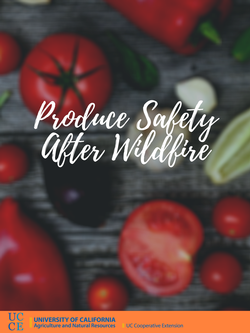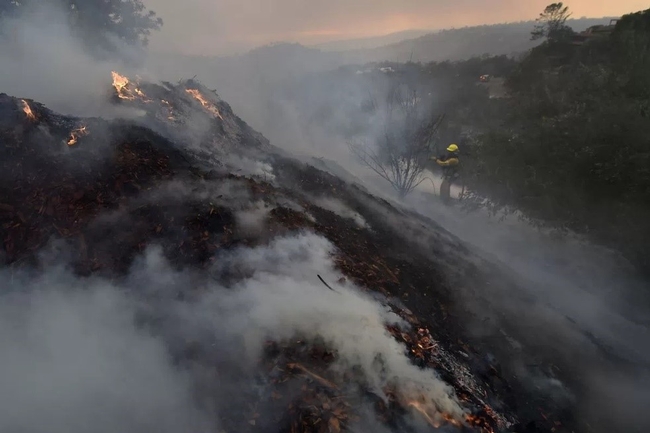Produce Exposed to Smoke

When assessing the safety of exposed produce, the difficulty is knowing what has been burning. If it is just vegetation smoke then it's probably safe to eat produce after rinsing off the ash (just the same as having a bonfire in your garden), although it might still taste/smell smoky.
If the air pollution has particulate matter from treated timber, tires, non-food grade oils, or anything plastic or chlorinated that burned it may include a mixture of Polycyclic Aromatic Hydrocarbons (PAHs), dioxins, and metals. Exposure to fire retardant may have also occurred.
An unpublished literature review on the health impacts of PAHs from traffic-related air pollution on lettuce grown in urban agriculture found that:
- Some PAHs can be absorbed into plant tissue, and so cannot be simply washed off.
- The health risk from eating these PAHs is a small proportion of the health impact from breathing them, and it is far below the EPA's level of concern for lifetime cancer risk.
- It is possible that the health benefit of eating the vitamins and nutrients in green leafy vegetables might outweigh that negligible negative impact.
- There is not enough research available on the cumulative impacts of air pollution on produce to make any solid conclusions about the health impacts.
Produce Safety after Urban Wildfire study conducted following Oct 2017 fires in Sonoma County.
Fires & Food Safety flyer by USDA FSIS, 2/2013.
Food Safety after Fire by USDA FSIS, 8/2013.
Soil Testing
Some technical guidance tip sheets and power points that may be helpful can be found here:
- Soil Sampling, Risk Mapping & Exposure Prevention - Rob Bennaton
- Contaminants in Soils, Data Collection-Interpreting Test results and Minimizing Exposure by Cornell University
- Testing Laboratories in California
- UCCE Soils in Urban Agriculture
- Best Practices for Produce Safety After A Fire
- Produce Safety After a Fire Tool Kit
